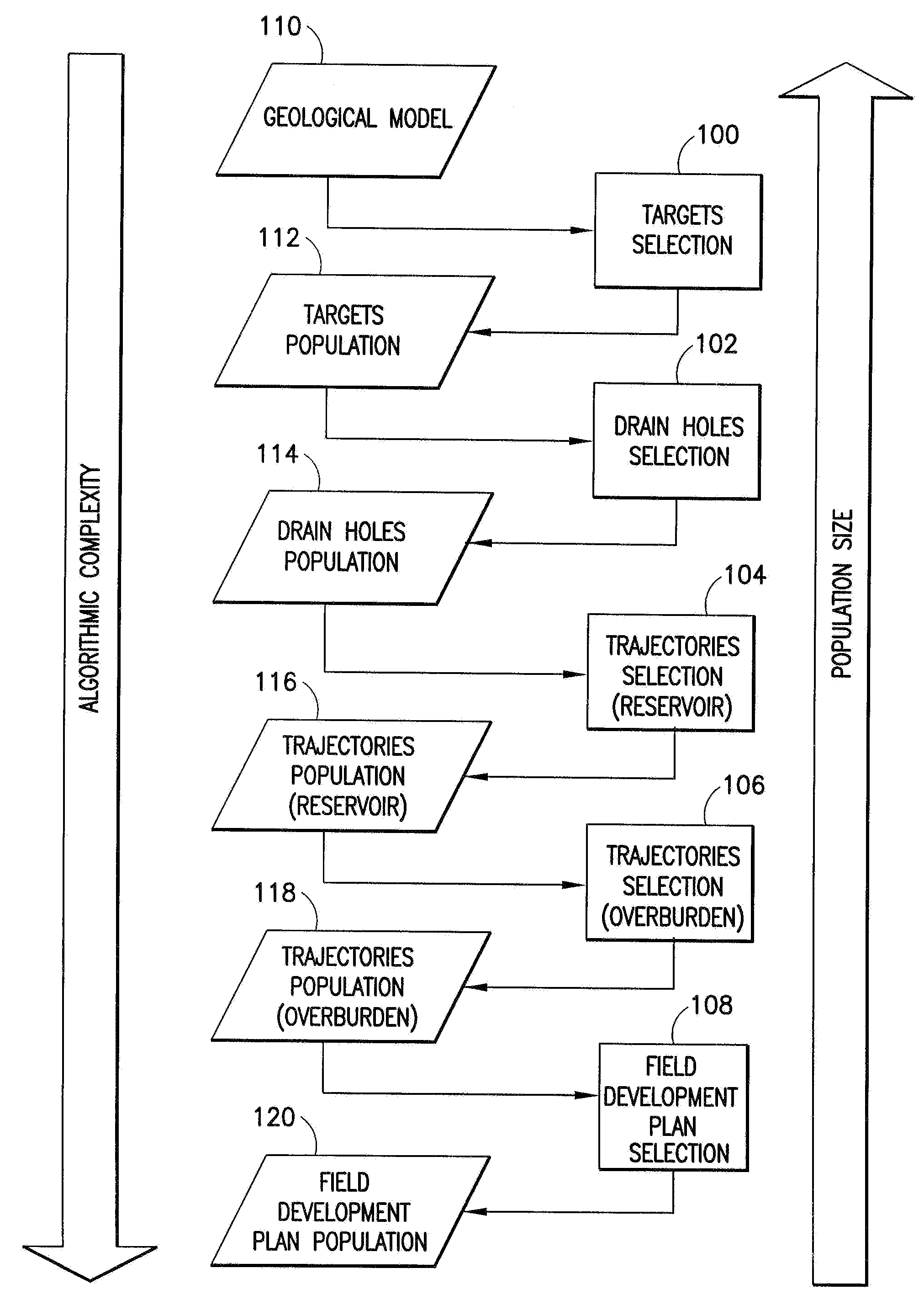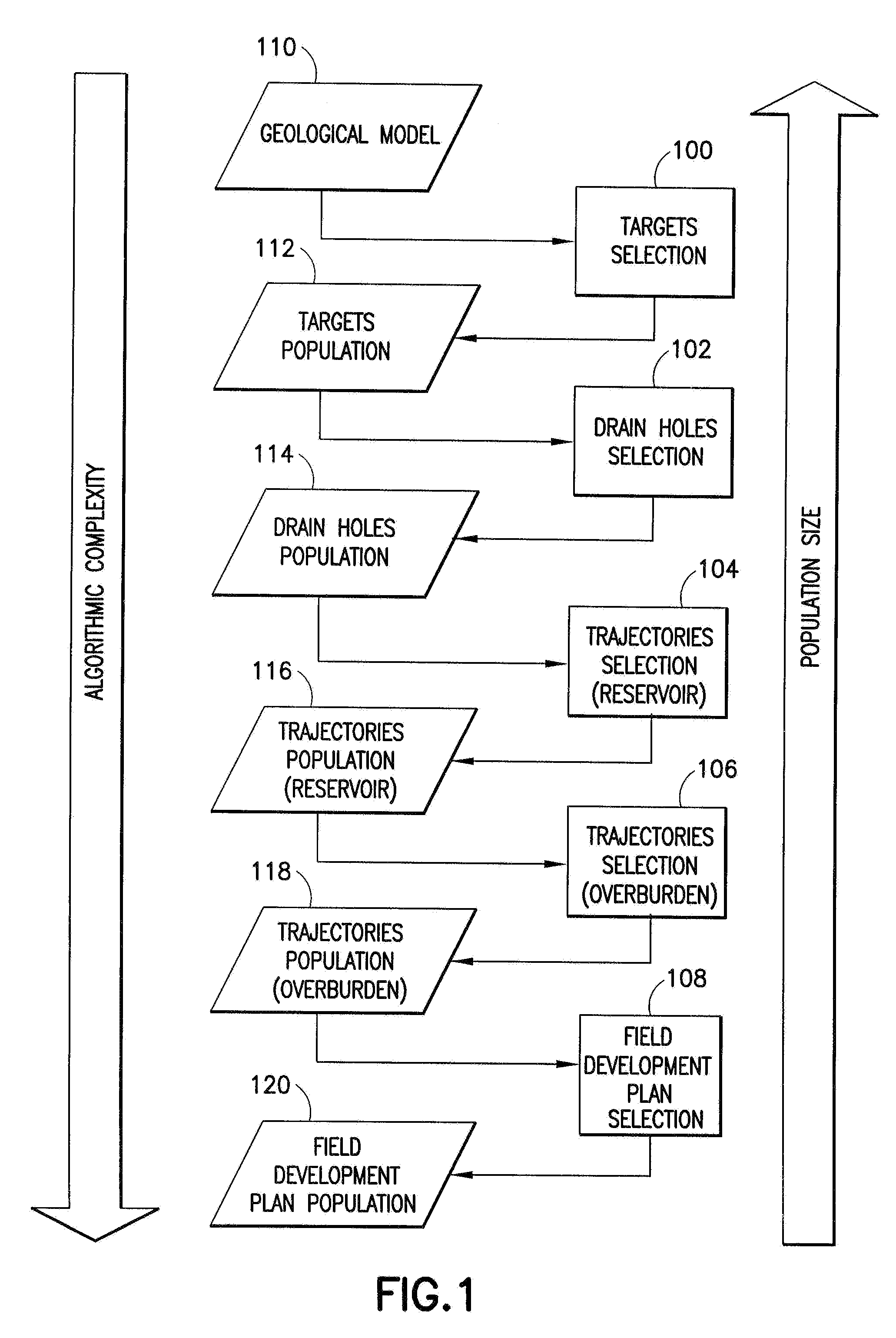Automated field development planning of well and drainage locations
a technology for drainage and development planning, applied in the field of oil and gas wells, can solve the problems of more complex and computationally intensive algorithms, and achieve the effects of maximizing recovery or economic benefit, and reducing the number of candidates
- Summary
- Abstract
- Description
- Claims
- Application Information
AI Technical Summary
Benefits of technology
Problems solved by technology
Method used
Image
Examples
Embodiment Construction
[0018]FIG. 1 illustrates a technique for automated computation of a FDP including locations of wells and production platforms in an oil or gas field. Workflow is organized into five main operations: target selection (100), drain hole selection (102), reservoir trajectory selection (104), overburden trajectory selection (106), and FDP selection (108).
[0019]The target selection operation (100) is initialized by generating a large initial population (112) of target sets from a geological model (110). For example, 1000 different target sets might be generated, although the actual population size is dependent on the complexity of the field and other considerations. Each member of the population is a complete set of targets to drain the reservoir(s), and each target is characterized by an estimate of its value. For example, a simple value estimate is the associated stock tank oil initially in place (“STOIIP”). In subsequent operations, the large initial population of target sets is gradua...
PUM
 Login to View More
Login to View More Abstract
Description
Claims
Application Information
 Login to View More
Login to View More - R&D
- Intellectual Property
- Life Sciences
- Materials
- Tech Scout
- Unparalleled Data Quality
- Higher Quality Content
- 60% Fewer Hallucinations
Browse by: Latest US Patents, China's latest patents, Technical Efficacy Thesaurus, Application Domain, Technology Topic, Popular Technical Reports.
© 2025 PatSnap. All rights reserved.Legal|Privacy policy|Modern Slavery Act Transparency Statement|Sitemap|About US| Contact US: help@patsnap.com



